Q: Why the inverted commas?
A: Because – even before you consider the diverse delights of its “floor” – “Jarrah forest” is a misnomer. Generally, its “skyline” co-stars two big tree species – Jarrah and Marri
Eucalyptus marginata (Jarrah) is a very slow-growing tree; by definition, if you are looking at a really big Jarrah, it was already growing before European eyes first saw it.
Its timber is one of the world’s most beautiful and durable hardwoods.
You’ll find that timber all over the world – in furniture, fences, wharves, railway sleepers, even streets and road surfaces – but the relevant trees grow/grew only in relatively wet parts of southwestern Australia.
European colonisers only began to harvest Jarrah in 1829; then, the so-called “jarrah forest” included many huge trees.
Now, almost all of those “king” trees are gone, only an infinitesimal amount of “virgin” forest still stands, and – as will be explained further in a future post – the remaining “kings” will be the last of their kind.
So-called “Jarrah forest” is almost always in fact really Jarrah-Marri forest.
Corymbia calophylla – formerly Eucalyptus calophylla – is an equally magnificent tree, but the Marri (aka “WA red gum”) has less “useful” timber, so foresters/millers used to dismiss it as a “rubbish” tree.
The individual’s age and the conditions in which it grows determine whether a Jarrah or Marri is a very grand, tall tree or a scraggy small one.
The cooler, wetter, southern “jarrah forest” has the grander trees; a future post will “look up” at some.
This one looks down, to the southern forest’s floor.
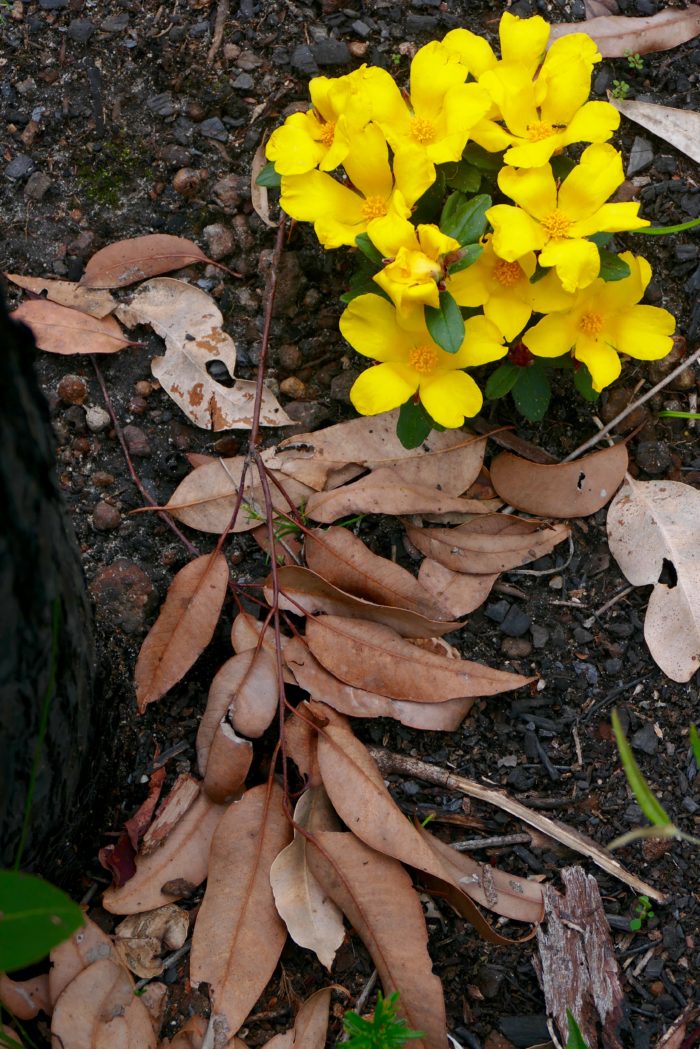
All photos in this post were taken on a single early September day in 2016, when my beloved and I walked in forest just north of Mumballup – a short drive away from Collie, the Ferguson Valley, Donnybrook, Bunbury or Balingup.
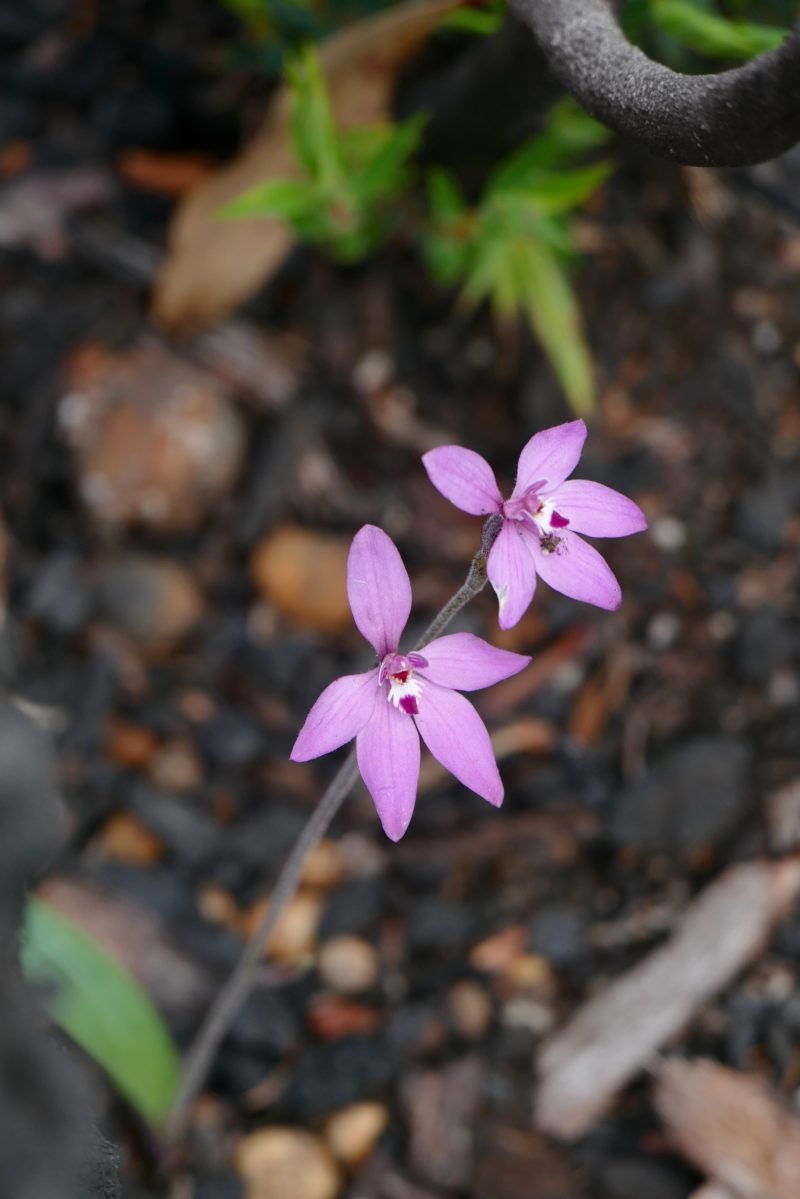
Caladenia latifolia – Pink Fairy orchids – were abundant.
Less abundant, but also easy to find, were lovely examples of Cyanicula – blue orchids. I think these are both Cyanicula sericea – Silky Blue Orchid.
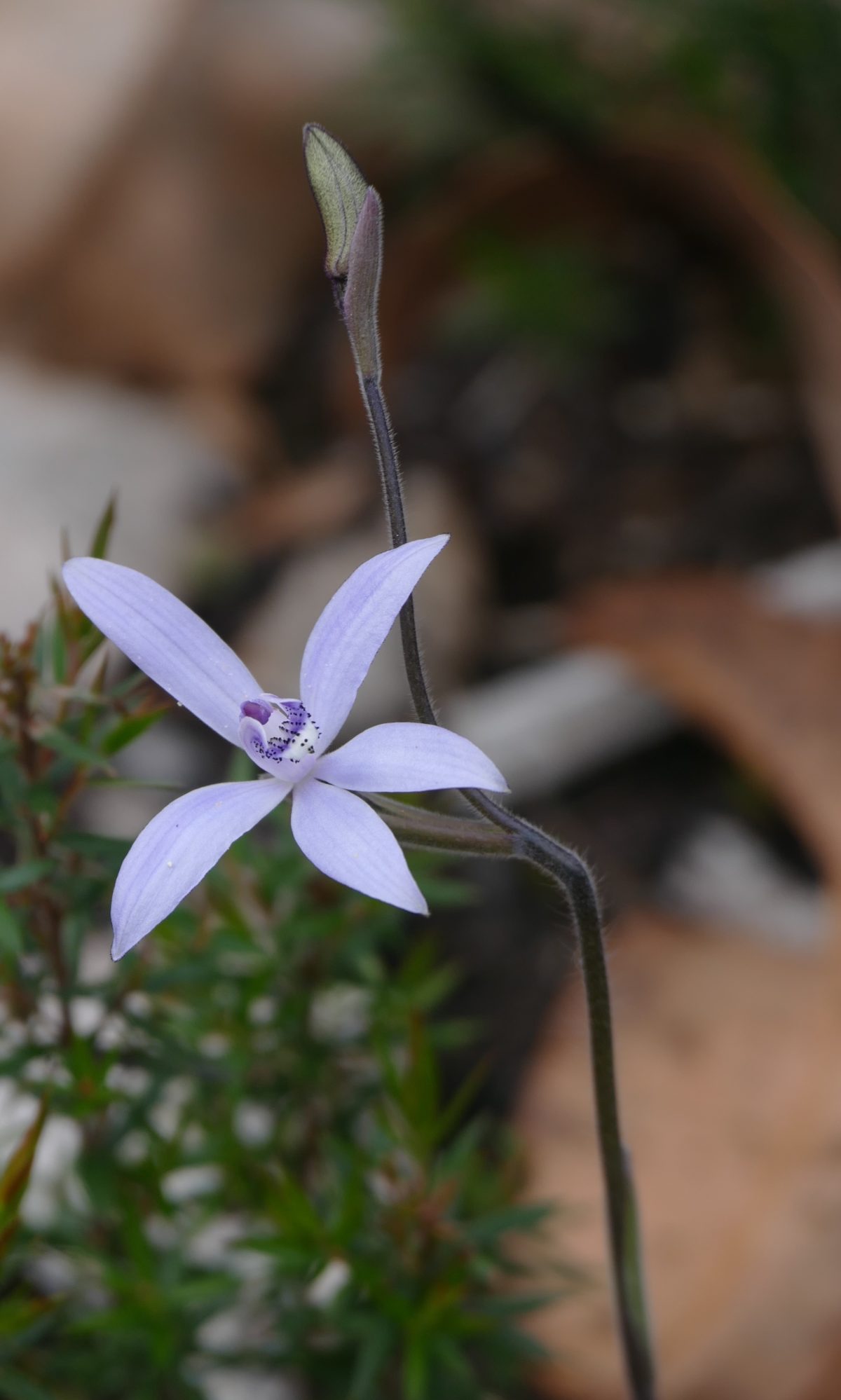
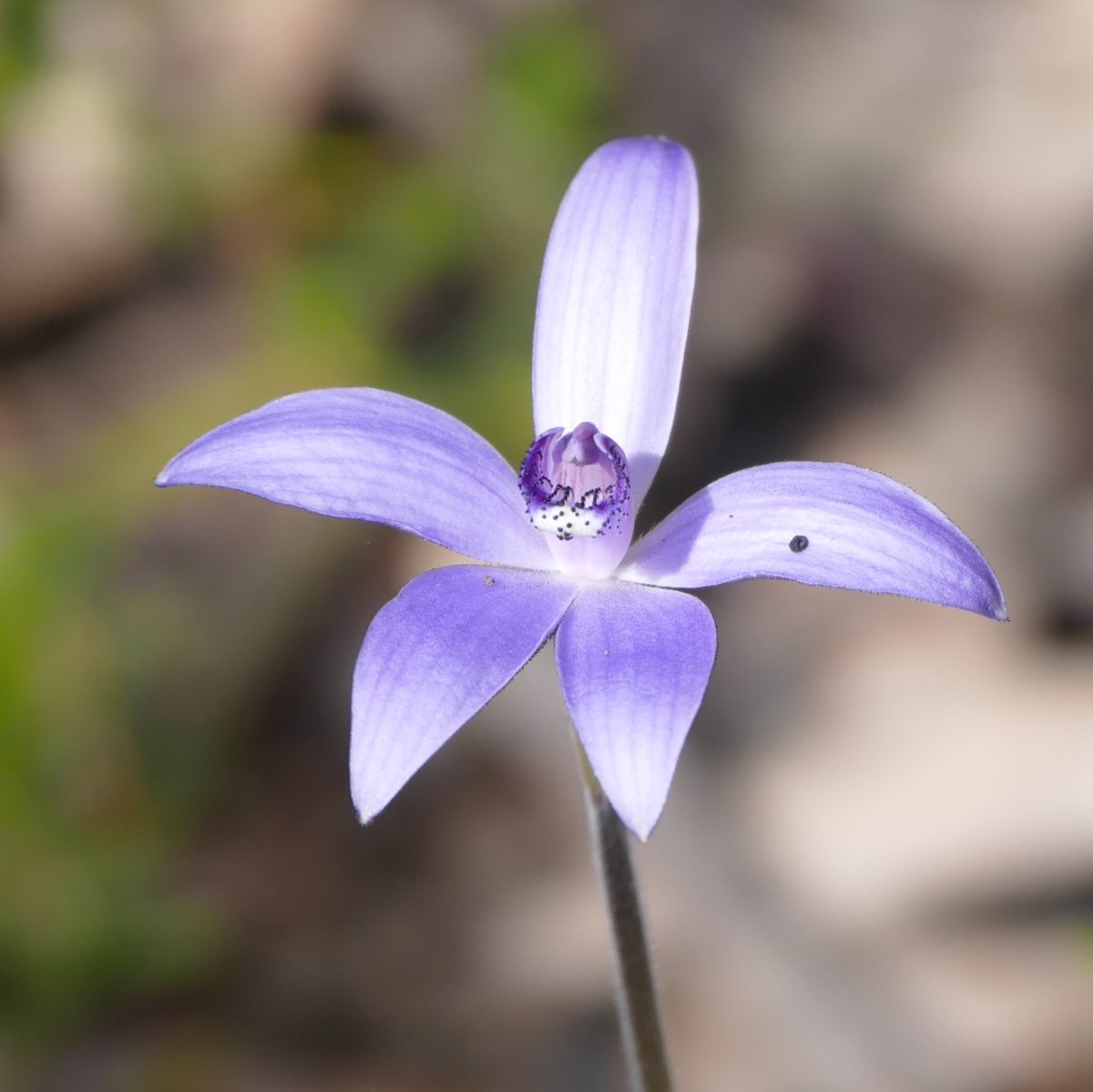
Not everything lovely on the forest floor is a flower.

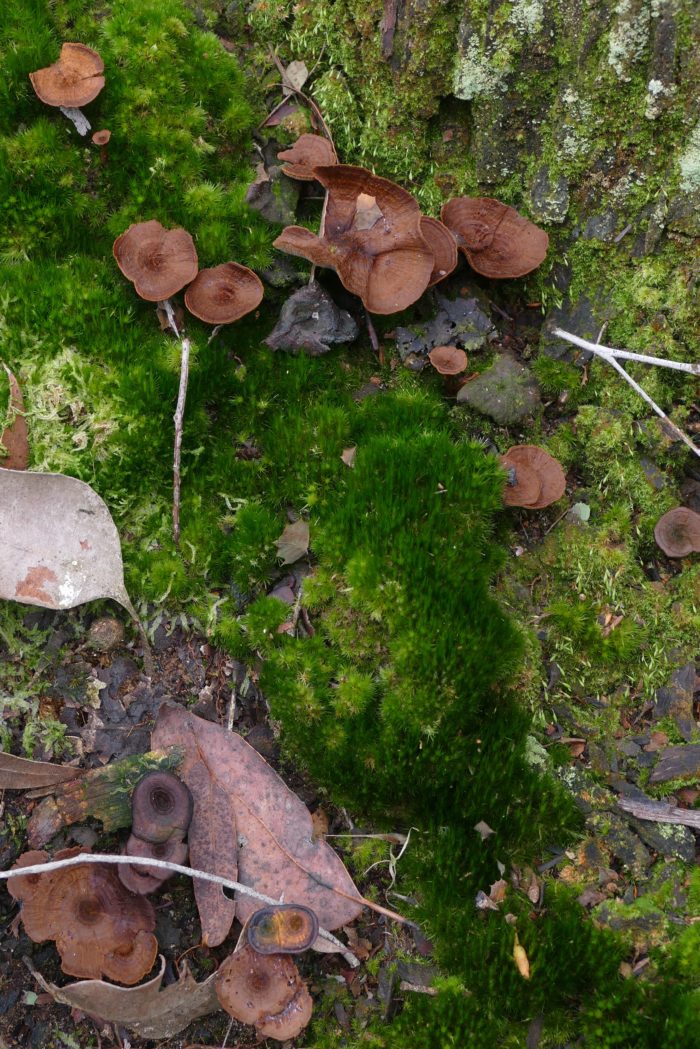
And even a lovely flower is much the lovelier for the context in which it grows.
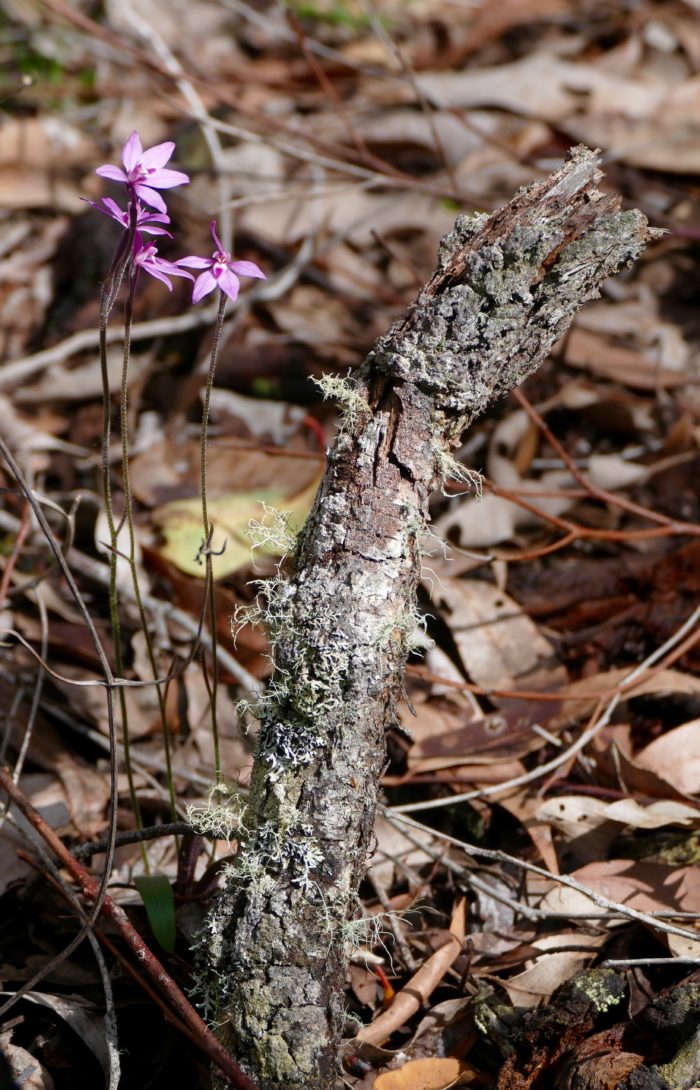
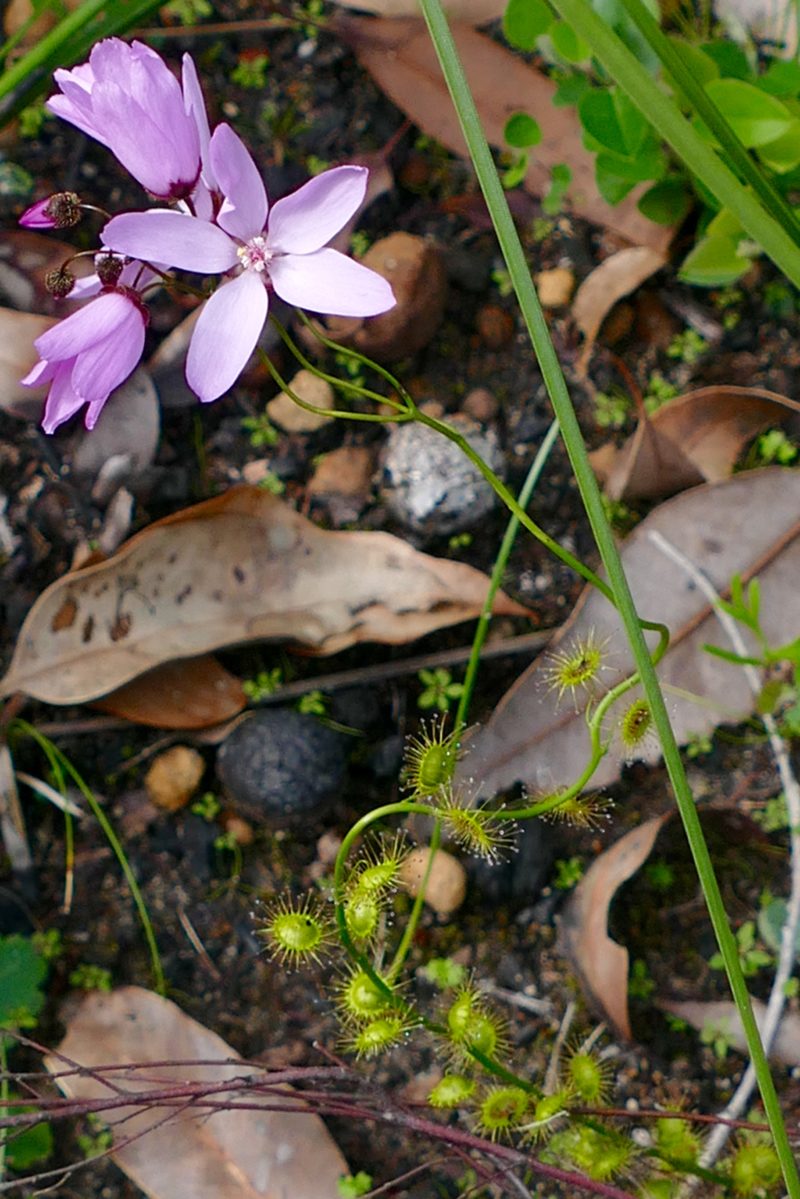
Members of the carnivorous genus Drosera – sundews – are so abundant in the forests and bush of southwest WA that many people don’t even notice how exquisite they are.

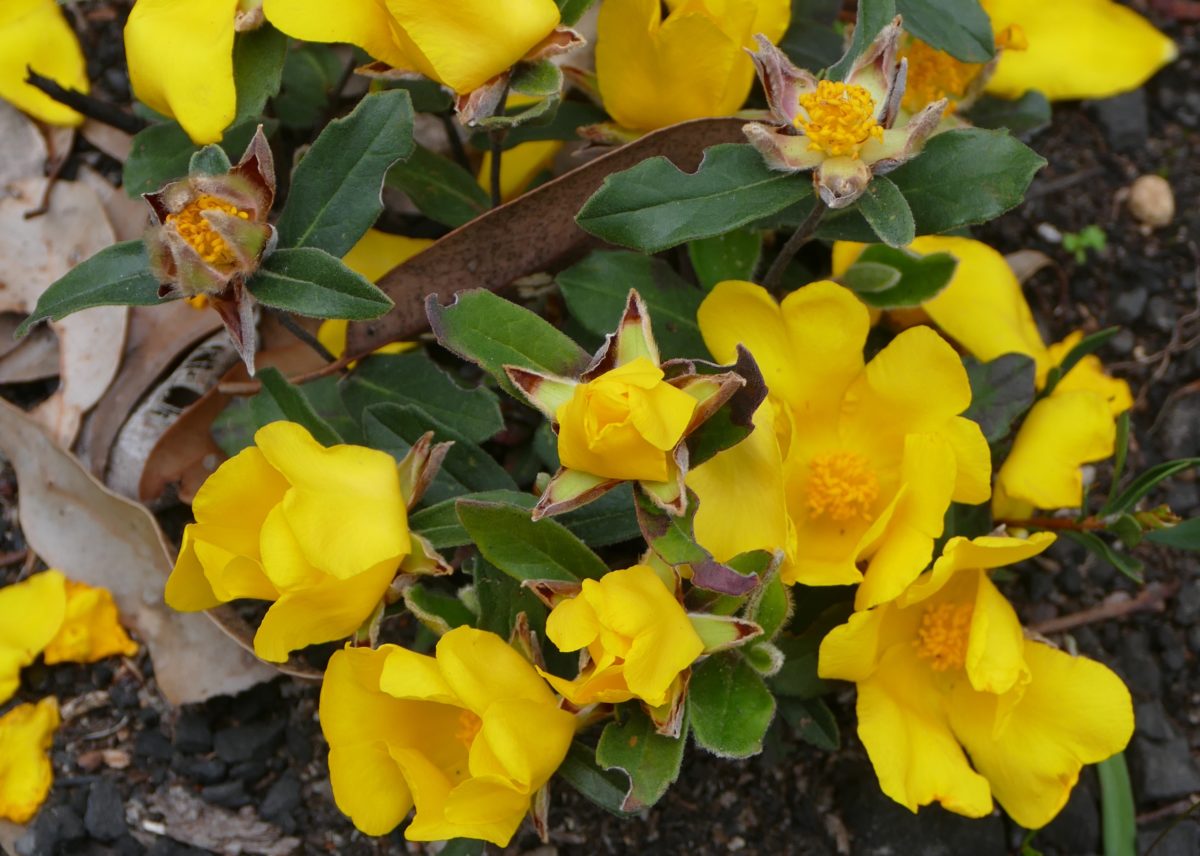
Lovely photos